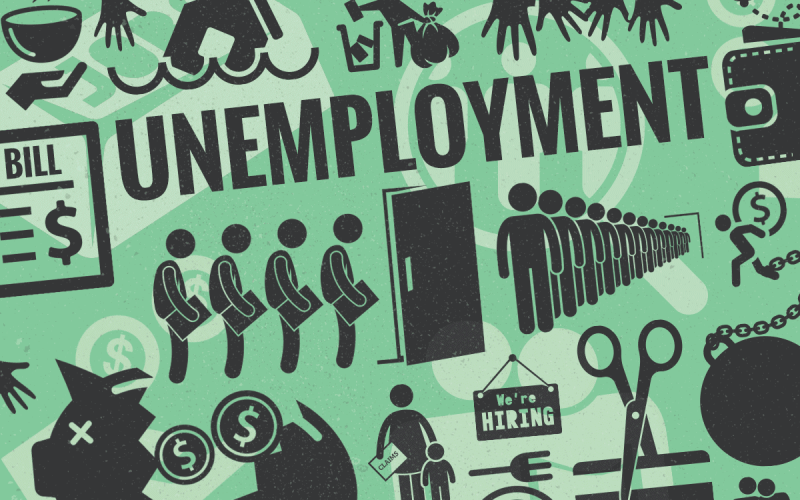Unemployment isn’t defined as a single determinant. It’s characterized instead as having different types of unemployment and definitions.
Economists generally use three types of unemployment when computing the unemployment rate: structural, cyclical, and frictional.
There may be no worse sensation than being jobless, sifting through job postings, updating and rewriting your résumé, worrying, and insecurity.
The list goes on and on. Did you know, however, that there are different types of unemployment?
“Why does it matter what kind of unemployment I have?” you might be thinking. “All I want is a new job.” We understand, but we haven’t dismissed the lesson yet.
What measures you need to take in your job search will depend on your type of unemployment. Understanding your structural, cyclical, or frictional unemployment is critical to a more efficient and effective job hunt.
1. Structural Unemployment
This type of unemployment is broadly characterized as unemployment caused by a mismatch between an individual’s perceived value and talents and the skills necessary by an employer to accomplish the job appropriately.
After all, job skills are dynamic, and new talents gradually replace current but aging capabilities that an employer no longer requires.
Employers demand these fresh talents to flourish in the marketplace. Consider a brake pad company that sells brake pads and components to car manufacturers, auto parts retailers, and auto repair shops.
In the last ten years, automation has improved brake pad manufacturing and installation performance so that human brake pad specialists are no longer required. As a result, long-time brake pad manufacturers are likely to lose their jobs.
Similarly, that same brake pad manufacturer, presumably producing components faster and lower, sees sales rise and now requires employees with different but required skills.
Such skills include thinking of sales and marketing professionals, customer service representatives, and technology specialists when creating, maintaining, and repairing automated brake pad manufacturing systems.
In this scenario, manufacturing line operators face more structural unemployment, but technology specialists and sales professionals face lower unemployment as demand for their services rises.
2. Cyclical Unemployment
Cyclical unemployment is comparable to structural unemployment because it is highly dynamic and changes regularly. Businesses hire more people when the economy is doing well and the unemployment rate rises.
Aggregate demand falls during the contraction phase of an economy’s trade cycle, resulting in disinvestment, production declines, and unemployment.
Keynes emphasized that depressionary unemployment is generated by a lack of effective demand, which Lerner calls “deflationary unemployment.”
Measures to increase total expenditure in the economy, pushing up effective demand, are the remedy to such cyclical unemployment.
Keynes pushed for easy money policies and fiscal measures such as deficit financing in this context.
Because cyclical unemployment cannot last forever, cyclical unemployment, also known as deflationary unemployment, is only temporary.
3. Frictional Unemployment
“Frictional unemployment” refers to the short-term factors that go into calculating the country’s unemployment rate.
This type of unemployment refers to the rising unemployment rate as career professionals shift between jobs for a variety of reasons, including:
- Employees who relocate to a new state, city, or municipality are looking for work.
- Employees who quit their employment to find a better one.
- College graduates with advanced degrees return to the workforce after receiving a post-graduate degree when they find a new job linked to their studies.
- On the other hand, strikes and lockouts may cause work to be suspended, resulting in some frictional unemployment for the time being. Frictional unemployment is exacerbated to some extent by labor mobility issues. Frictional unemployment is caused by factors that prevent unemployed workers from moving geographically or occupationally to open positions.
- According to economists such as Keynes and Lerner, frictional unemployment is consistent with the state of full employment in an economy. Frictional unemployment occurs when it is difficult to match employees with job openings.
- As a result, some unique mechanisms for overcoming labor mobility, such as disseminating information about job prospects, organizing positions through employment exchanges, and enhancing transportation infrastructure, can lower the amount of frictional unemployment.
Consider a recent college graduate who worked as a data analyst for a financial services firm for a few years following graduation.
However, after hearing more about artificial intelligence and after some research, college graduates determined that this is the subject for them.
As a result, he takes two years off from employment to get a master’s degree in science and technology with a concentration in artificial intelligence.
Frictional unemployment is defined as the time between his last job as a Wall Street data analyst and his new job as an artificial intelligence product developer.
Because full frictional unemployment never goes away, it must be considered when calculating national unemployment.
4. Seasonal Unemployment
Similarly, extra workers may be hired on the spot in places like dockyards at peak loading or unloading times. These extra workers are laid off once the project is completed.
In the film industry, where younger actors work on a casual basis, casual unemployment also exists. It is quite difficult to propose a particular answer to this problem.
Specific industries may only operate for a limited time during the calendar year (think a Christmas tree seller operating out of a mall parking lot, an ice cream shop by the beach that closes down after Labor Day, or, on a larger scale, an Iowa farm that produces corn seasonally.)
Seasonal industries have higher unemployment during off-peak periods, and the monthly unemployment figures in the United States reflect this seasonality issue.
Seasonal unemployment exists in all countries, rich and developing alike. It entails the underutilization of manpower and capital inventories in seasonal industries.
This creates a major problem of waste of productive resources for an underdeveloped country with limited capital resources.
Farmers’ seasonal unemployment can be overcome by making agriculture a full-time job through irrigation, fertilizers, and mechanization.
Intensive cultivation, double cropping, mixed farming, dry farming, and other techniques can all help. This would not only eliminate the unemployment problem but also boost national income and societal welfare.
Promoting small-scale industries and overhead social projects (such as road construction, irrigation projects, etc.) can help alleviate seasonal unemployment.
5. Regional Unemployment
Unemployment is a major issue on a regional or even state-by-state basis. Agricultural, fishing, tourism, and other businesses are all influenced by geography, weather, and customer demand.
After mid-April, when the weather in Northern states begins to improve, there is no doubt a drop-off in tourists in Southern Florida.
As a result, demand for in-season labor falls, and the unemployment rate for regional workers rises.
6. Voluntary Unemployment
Some workers choose not to work for various reasons. Consider a software industry employee who receives a large severance package from her previous employer and can comfortably live on the money for six months.
She may take 90 days off and then look for work for the next 90 days. Alternatively, someone on welfare may accept federal government benefits such as welfare (unemployment benefits) rather than work.
It happens, whether fair or unfair, and it’s reflected in the voluntary unemployed group.
Consider a software engineer who receives a sizable severance pay from her previous employer and can live well on the money for six months. She may take 90 days off and look for work for the next 90 days.
Alternatively, a welfare recipient may decide that they would prefer to accept federal government benefits rather than work. Whether fair or unfair, it happens, and the voluntary unemployed group reflects it.
7. Casual Unemployment
Casual unemployment is one type of unemployment that is possible in businesses where workers are engaged on a day-to-day basis, such as construction, catering, or agriculture, due to short-term contracts that can be terminated at any time.
As a result, when a worker’s contract expires when the job is completed, he must look for work elsewhere, which he is likely to find depending on the conditions, or he may be offered a new contract with the same firm when new work begins.
Similarly, extra workers may be hired on the spot in places like dockyards at peak loading or unloading times. These extra workers are laid off once the project is completed.
In the film industry, where younger actors work on a casual basis, casual unemployment also exists. It is quite difficult to propose a particular answer to this problem.
8. Technological Unemployment
Technical advancements may cause an economy to experience structural unemployment, also known as technology unemployment.
The introduction of new machinery, improvements in manufacturing procedures, labor-saving gadgets, and other innovations are replacing some workers.
Their joblessness is referred to as “technical unemployment.” The introduction of machines is primarily responsible for technological unemployment.
However, it is only a fad. In the long run, development facilitated by using more capital leads to diversifying activities and promoting numerous linked businesses, resulting in more job prospects and a more remunerative reintegration of unemployed people.
Technological unemployment is not a major issue in developed countries.
This is due to incremental technical improvement rather than a sudden shift in their standard technology, which is already advanced.
However, the technological dilemma in undeveloped countries is substantial, as rudimentary techniques have recently been abandoned in favor of new capital-intensive techniques from developed countries.
As a result, artisans are the ones who suffer the most throughout the changeover phase. To alleviate the situation, new job possibilities on a wide scale must be generated in other industries simultaneously.
In a developing economy, technical improvement causes technological unemployment and scrapping the existing old capital.
When agriculture gets mechanized, for example, rudimentary equipment and animals become useless.
The best way to solve technological unemployment is to create new work possibilities quickly.
As a result, experts at the United Nations advised that “rapid economic progress is paradoxically the largest source of technical unemployment while also being the greatest cure.
9. Chronic Unemployment
The term “chronic unemployment” refers to when unemployment is a long-term feature of a country.
Due to the cyclical cycle of poverty, chronic unemployment is a problem in developing countries.
Chronic unemployment in underdeveloped countries is caused by a lack of developed resources and their underutilization, fast population growth, a backward, even primitive state of technology, low capital formation, and other factors.








